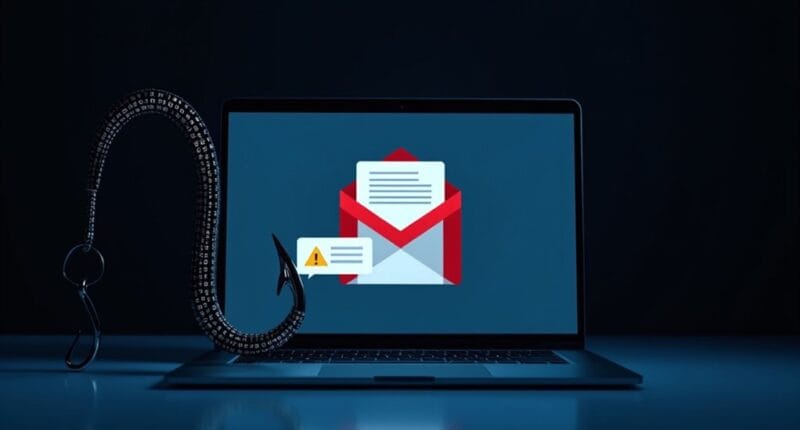Google phishing scams have evolved into devious masterpieces of deception. Attackers now expertly mimic legitimate Google notifications, exploiting the company’s trusted infrastructure to fool even tech-savvy users. These fraudulent emails bypass security checks and feature professional designs, urgent-sounding links, and QR codes leading to fake support portals. With nearly half of email traffic consisting of spam, these sophisticated scams put personal data at serious risk. The rabbit hole of digital deception goes deeper than most realize.

Countless Google users fall victim to sophisticated phishing scams every year, with attackers exploiting the tech giant’s trusted infrastructure. These aren’t your grandfather’s Nigerian prince emails – we’re talking about sleek, professional-looking messages that could fool even tech-savvy users. The scammers have gotten good. Really good.
Modern phishing scams targeting Google users are sophisticated masterpieces of deception, fooling even the most tech-savvy professionals.
The attacks typically arrive disguised as legitimate Google notifications – account alerts, shared documents, or even legal subpoenas. At first glance, everything looks perfect: proper grammar, professional formatting, and sender addresses that could pass for the real deal. Even those seemingly bulletproof DKIM security checks? Yeah, these emails sail right through them. Recent examples show malicious emails containing external shared documents promising departmental rewards. In fact, 45.6 percent of traffic flowing through email systems consists of spam messages designed to deceive users.
Here’s where it gets devious: the scammers are actually using Google’s own platforms to pull off their schemes. They create fake support portals using Google Sites, complete with that familiar Google aesthetic we’ve all come to trust. They’ll throw in some urgent-sounding links like “View case” or “Upload documents” – and for extra modern flair, sometimes even QR codes that lead straight to their phishing sites.
The subtle tricks are what make these scams so effective. Maybe the sender’s address is [email protected] instead of .com – easy to miss when you’re quickly scanning emails. Or perhaps the login page looks exactly like Google’s, except it’s hosted on Google Sites instead of the actual account domain. Small details, big consequences.
The impact is devastating. Once attackers gain access to an account, they can wreak havoc – stealing personal data, compromising recovery options, and maintaining long-term control. What makes this particularly frustrating is how these scams leverage Google’s widespread trust and familiarity. The very features designed to make Google services secure and convenient are being twisted into tools for deception.
These aren’t isolated incidents anymore. The campaigns are growing more sophisticated, reaching broader audiences, and achieving higher success rates. Traditional email security? It’s practically useless against attacks that abuse legitimate Google domains. The scammers have found a winning formula, and they’re running with it.





